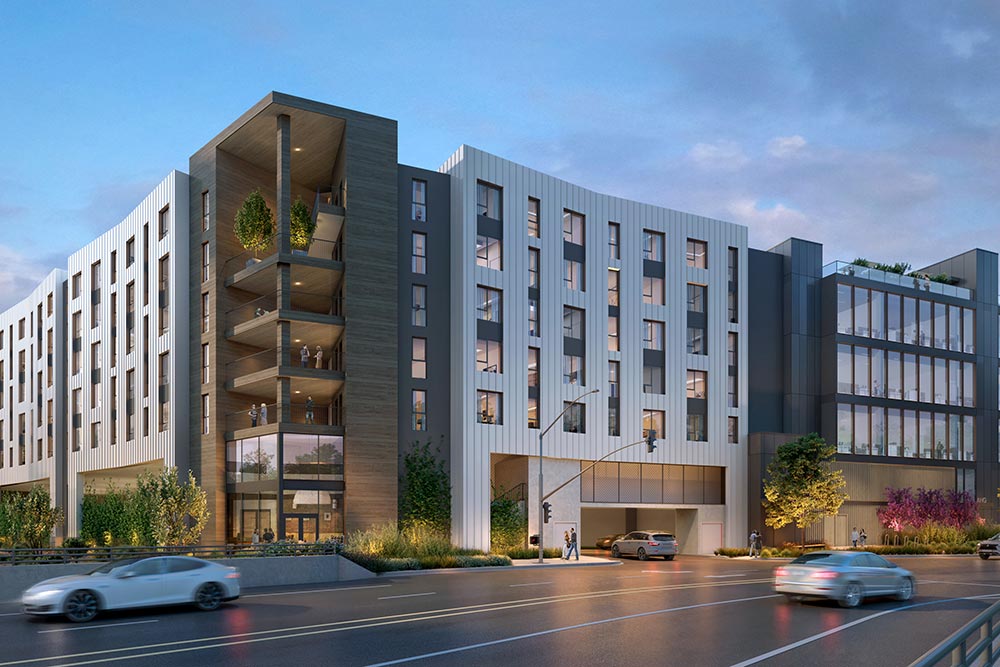Affirmed Housing, a leading provider of affordable and supportive housing throughout California, in collaboration with the San Diego Metropolitan Transit System (MTS), are developing SkyLINE, a new mixed-use, transit-oriented development at the Rancho Bernardo Transit Station. Transit and housing officials broke ground on the development on Feb. 15, 2024.
The new seven-story development in San Diego’s Rancho Bernardo neighborhood will include 100 apartment homes and roughly 14,000 square feet of commercial space. Affirmed Housing will be leasing the office space which will become the new company headquarters.

Renderings of SkyLINE
SkyLINE will provide 99 apartment homes ranging from 1-3-bedrooms for low-income families earning between 30 and 60 percent of the area median income, as well as 1 manager unit. Resident amenities will include an expansive outdoor common space with gathering areas, play areas for children, a barbecue station, community room, leasing center, learning center, computer room, and two laundry rooms. Residents will also have exclusive access to services and programs designed to support quality of life goals, such as health and wellness classes, financial literacy, parenting, food preparation, career building, job readiness (such as resume writing and interviewing skills), voter registration, and other enrichment activities.
SkyLINE utilizes a portion of an existing MTS parking lot that is in close proximity to several off-site amenities, including bus service, grocery stores, pharmacies, healthcare options, and the Rancho Bernardo library. To activate the underutilized land and maximize development potential, Affirmed Housing is engaged in a 99-year lease with MTS. As part of the partnership, Affirmed Housing enhanced the property’s sewer and water systems and worked alongside MTS to meet their current and future parking needs for MTS riders. In addition to designated resident and office parking space, SkyLINE provides 84 parking stalls for MTS patrons, an adequate capacity for transit riders based on demand and the ability to effectively use the transit system.